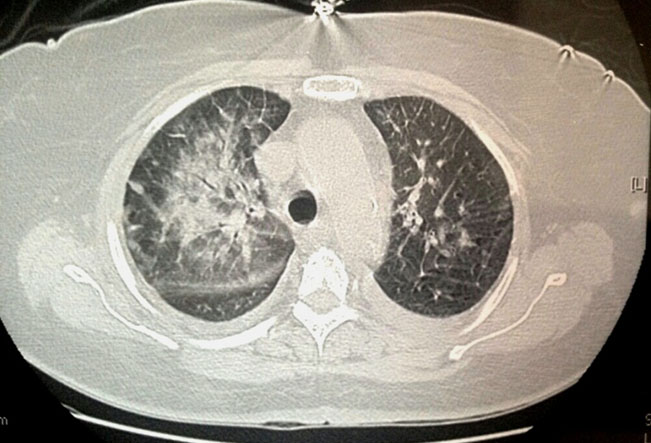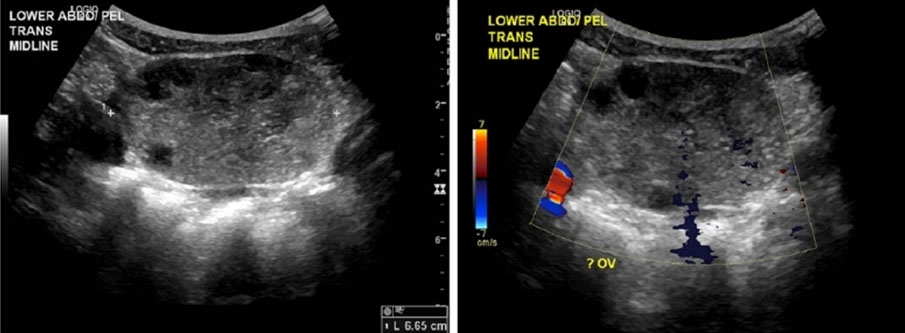 |
Case Report
Pulmonary embolism identified prior to anesthesia induction in a low-risk patient
1 MD, Clinical Assistant Professor, Anesthesiology and Pain Medicine, Wonju Severance Christian Hospital, Wonju, Gangwon-do, Republic of Korea
2 MD, Resident, Anesthesiology and Pain Medicine, Wonju Severance Christian Hospital, Wonju, Gangwon-do, Republic of Korea
3 MD, PhD, Professor, Anesthesiology and Pain Medicine, Yonsei University Wonju College of Medicine, Wonju, Gangwon-do, Republic of Korea
Address correspondence to:
Hyun Kyo Lim
Department of Anesthesiology and Pain Medicine, Yonsei University Wonju College of Medicine, 20 Ilsan-ro, Wonju, Gangwon-do 26426,
Republic of Korea
Message to Corresponding Author
Article ID: 100079Z06JP2020
Access full text article on other devices

Access PDF of article on other devices

How to cite this article
Park J, Lee EB, Hong D, Lee KH, Lim HK. Pulmonary embolism identified prior to anesthesia induction in a low-risk patient. Case Rep Int 2020;9:100079Z06JP2020.ABSTRACT
Introduction: Early detection and treatment of pulmonary embolism (PE) are critical for reducing morbidity and mortality of patients. However, diagnosis can be difficult if the symptoms are not clear.
Case Report: A 21-year-old male patient visited the emergency room with multiple fractures, including femur fractures. Three days later, the planned operation was scheduled. On the day of surgery, the operation was canceled due to clinical diagnosis of PE because oxygen saturation on the pulse oximeter was 71–76% without dyspnea. Later, he was diagnosed with PE of the right lower lobe based on computed tomography (CT) pulmonary angiography, and surgery was performed without complications after low-molecular weight heparin treatment.
Conclusion: Even if a patient is low risk and does not have symptoms suspicious of PE, careful preoperative patient monitoring and preoperative anesthetic evaluation are important for identifying additional patient risks.
Keywords: Fracture, Oxygen saturation, Pulmonary embolism, Pulse oximeter
SUPPORTING INFORMATION
Author Contributions
Jihyoung Park - Substantial contributions to conception and design, Acquisition of data, Analysis of data, Interpretation of data, Drafting the article, Revising it critically for important intellectual content, Final approval of the version to be published
Eun Bi Lee - Substantial contributions to conception and design, Interpretation of data, Drafting the article, Revising it critically for important intellectual content, Final approval of the version to be published
Donguei Hong - Substantial contributions to conception and design, Acquisition of data, Analysis of data, Interpretation of data, Drafting the article, Revising it critically for important intellectual content, Final approval of the version to be published
Kwang Ho Lee - Analysis of data, Drafting the article, Revising it critically for important intellectual content, Final approval of the version to be published
Hyun Kyo Lim - Substantial contributions to conception and design, Acquisition of data, Analysis of data, Interpretation of data, Drafting the article, Revising it critically for important intellectual content, Final approval of the version to be published
Guaranter of SubmissionThe corresponding author is the guarantor of submission.
Source of SupportNone
Consent StatementWritten informed consent was obtained from the patient for publication of this article.
Data AvailabilityAll relevant data are within the paper and its Supporting Information files.
Conflict of InterestAuthors declare no conflict of interest.
Copyright© 2020 Jihyoung Park et al. This article is distributed under the terms of Creative Commons Attribution License which permits unrestricted use, distribution and reproduction in any medium provided the original author(s) and original publisher are properly credited. Please see the copyright policy on the journal website for more information.





